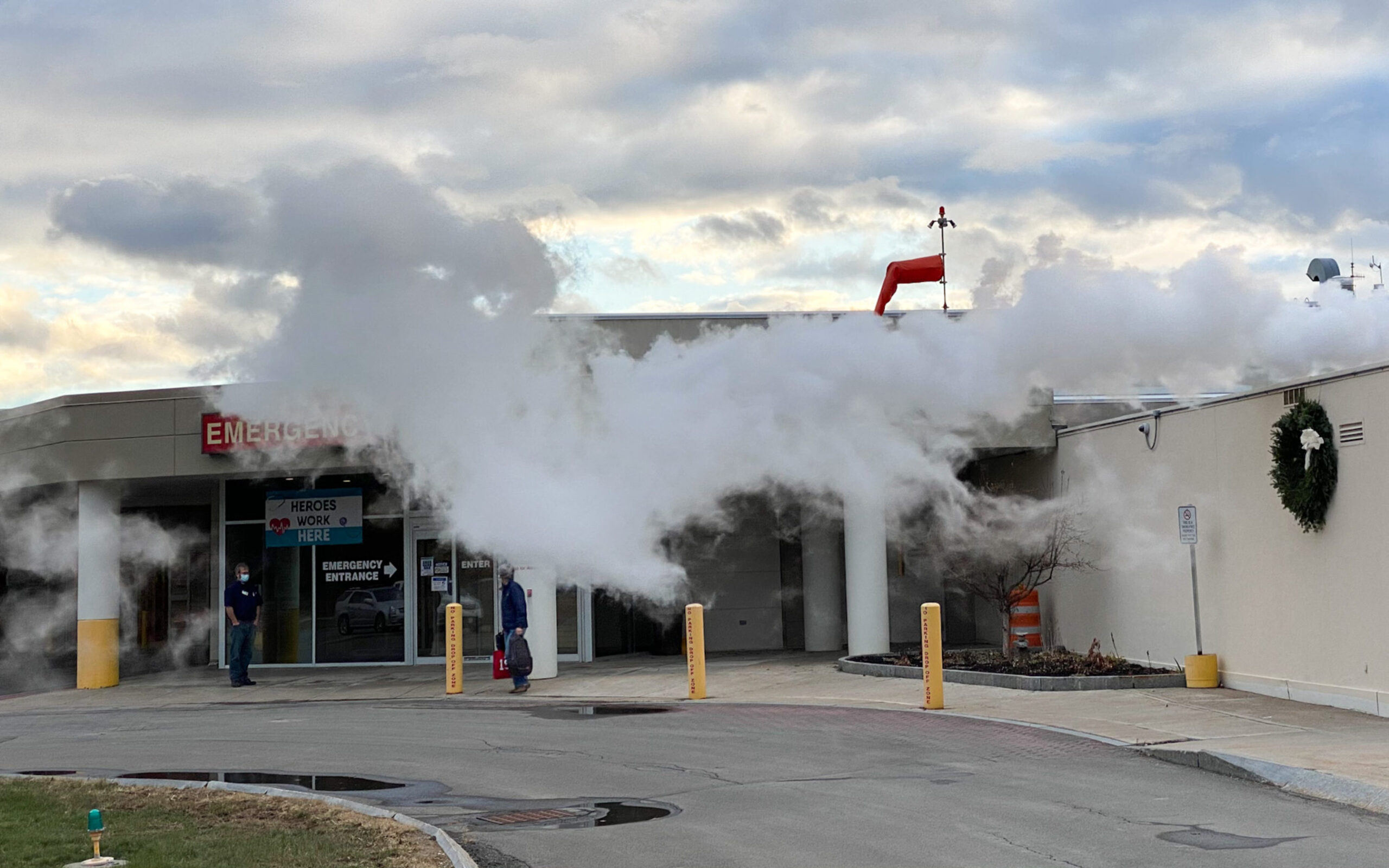
HOULTON, Maine — Workers at Houlton Regional Hospital witnessed an unusual sight on the afternoon of Monday, Nov. 16, as plumes of what looked to be white smoke started emitting out of the hospital’s Sigrid Tomkins Health Center near its entrance.
Many people stopped to gaze at the phenomenon. But the cause of the smoke is something many hospital staff knew about in advance — and originates with the replacement of the hospital’s old MRI machine.
An MRI, or magnetic resonance imaging machine, uses strong magnetic fields along with radio waves to complete detailed scans of the person who lies in the machine. Internal organs, bones and the brain can all be scanned via an MRI.
The machine’s powerful magnets are kept cool by liquid helium, which is stored in the machine at minus 429 degrees Fahrenheit. Part of the process of decommissioning the old MRI machine involves releasing the liquid helium. The subsequent rapid rise in temperature causes it to convert from a liquid to a gaseous state, giving the appearance of white smoke.
This process is what is known as “quenching”.
“The easiest way to do it for an older magnet like this is to just to quench it,” said Aaron Bassham, a service engineer for Desert Technology Systems, the company contracted to replace the old MRI. “The newer magnets don’t boil off helium the same way they do. They’re more sustainable.”
The old MRI’s magnet, along with several other parts of the old machine, which is more than 14 years old, will be recycled to be used to service other machines around the world. The newer machine will be much more accommodating and convenient for patients, according to Shawn Anderson, the CEO of Houlton Regional Hospital.
“This new MRI unit will better serve the community as it offers reduced exam times and has a much wider bore to make it more comfortable for larger patients and claustrophobic patients,” Anderson said. “The reduced exam time will also greatly benefit patients who are experiencing pain.”







